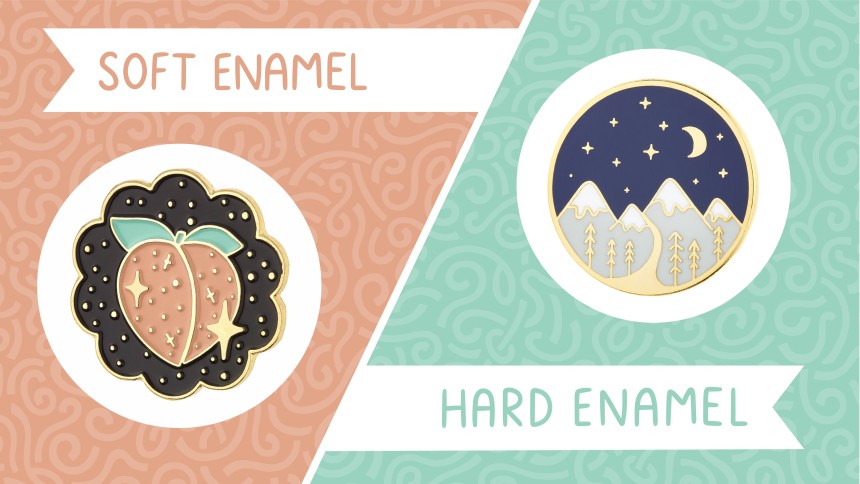
Which Enamel Should I Choose? | Soft Vs Hard Enamel
Have you decided to start your pin journey and aren’t sure where to start? There is no right or wrong answer when it comes to choosing your enamel finish. It’s all down to your personal preference. However, we’ve decided to compile the differences between soft and hard enamel to make your decision that little bit easier.
Soft Enamel
- The main distinguishable feature between soft and hard enamel is the texture. If you were to run your fingers over a soft enamel badge, you would instantly be able to feel the ‘bumps’ on its surface.
- Soft enamel pins are able to hold more detail, so we often recommend using soft enamel for more complicated and intricate designs, such as people and faces.
- Soft enamel badges have a more ‘dimensional’ look to them, as the enamel dries below the metal ridges of the custom mold which stops the individual colours from running and mixing together. This process leads to the badges having slightly raised edges, which gives the ‘bumpy’ texture.
- Price is a massive factor for most people when looking into purchasing pins. Soft enamel pins tend to be cheaper, as they don’t take as long to make due to the manufacturing process.
- If you do want a smooth finish on a soft enamel pin, it is possible to add epoxy to the surface to achieve this. Epoxy is almost like a clear bubble over the surface of the badge to create a flat finish. If you would like screen printing on your soft enamel pin, then epoxy must be applied first to give a level surface to print on to.
- If you would like rainbow plated pins, black dye plating or an antique finish then you will have to use soft enamel. Hard enamel is polished at the end to give the smooth finish and the above options would simply rub off.
Hard Enamel
- Hard enamel pins (also known as cloisonné pins) have a smooth and flat surface meaning you won’t be able to feel the ridges like soft enamel pins. Hard enamel badges may be more suited to you if you prefer a more smooth and polished look.
- Hard enamel badges usually come at a higher price point due to the baking taking longer when they are getting made. However, they have some additional qualities, such as being scratch resistant, being slightly more durable and they won’t lose their shine or colour over time.
- If you would like to add screen printing to your pin badges, then hard enamel is the enmaamel for you. Silkscreen printing is the perfect option for those who want to add more detail without the need of plating lines. This means you can also add additional colours to your design. Screen printing also allows you to add shadows and highlights, which wouldn’t usually be picked up through the use of normal enamel.
Backstamps
No matter what enamel option you choose, the options of backstamps still remain the same! Get your own logo stamped on the back for extra brand recognition. We also offer 10% off your order if you choose to have Made By Cooper’s logo on the back, which adds a nice extra bit of detail!
Get In Touch
Every pin is unique therefore the choice is ultimately up to you. However, if you still can’t quite make your mind up on which enamel finish to have then our team of experts are always happy to help and assist you. If you’d like to know more please don’t hesitate to contact us.
If you’re interested in how your enamel pins are made, take a look at our previous blog post on how the different enamel types are manufactured.